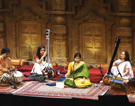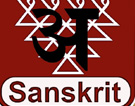What To Learn While Travelling In India
History
Historically, India has been the birthplace of one of the oldest civilizations of the world – the Harappan civilization. It has also been the seat of learning in this part of the world. One of the oldest universities, Nalanda University was established in this country.
This country has also been invaded numerous times by looters and plunderers from the west, which had lasting effects on its culture. The diversity in culture is also due to the presence of various religions like Islam, Hinduism, Buddhism, Sikhism, Jainism and Christianity among others. The Indian culture is known for its family ties, bonding with society and respect for elders. Joint families still exist in many homes.
An ancient Sanskrit phrase ‘Atithi Devo Bhava’ meaning ‘guest is god’ has been the way of life in this country since many centuries. In the recent past, it has been used as the tagline by the Ministry of Tourism to increase the popularity of various parts of the country as tourist destinations.
The fantastic geography and multiple holiday spots cater to a wide variety of tourist interests. From mountain peaks to beaches, from heritage sites to architectural wonders, from forts to wildlife sanctuaries, there are a phenomenal number of options to explore. People all over the world are fascinated by the arts, culture and cuisines of India.
Indian hospitality is famous worldwide for its warm and courteous welcoming nature. This is also where you can get to taste authentic homemade cuisines. If you are able to build a rapport, maybe you can learn how to cook certain local dishes as well.
Attire
The attire and cuisine in various parts of the country depend on its geography and climate. Though different fabrics are used for garments, cotton is used most often. Handmade woolen garments like shawls and firans are quite unique to this part of the world. The saree, especially silk saree, is also unique. Hand embroidery done on garments is a unique feature of adornment on garments which is now being adopted by western societies also.
Music
Over the centuries, music has been passed through generations. Bharatanatyam, Kuchipudi and Kathakali are the famous dance forms which have been passed on from generations. Indian music and dance has been associated with gods and goddesses. For instance, the Indian goddess of learning, Saraswati, is depicted holding a Veena, a musical instrument.
Shiva, the god, is known to be depicted as dancing, even if in anger. The ancient dances have given rise to local dance forms such as the Garba in Gujrat, Bhangra in Punjab and Lavani in Maharashtra.
Weather
In case you decide to visit a particular place in the country, you need to consider factors like weather at that time of the year, culture, cuisine, infrastructure, safety and places of interest. The Indian climate can be divided broadly into the summer, winter and monsoon season.
The coldest months are December and January with average temperatures ranging between 10 to 15 degrees Celsius and the summers are hot between 40 to 50 degrees Celsius. The northern part of the country experiences harsh changes in weather than the southern part which is comparatively moderate.
Places to Visit
The most popular sites which tourists can visit include the seven wonders of India. Gomateshwara or Bahubali is a statue near Bangalore so big that it is visible from 30 km away. The Golden Temple, located in the sacred city of Amritsar, is the most revered religious place for Sikhs. The Taj Mahal, one of the Seven Wonders of the World, is located in Agra and incorporates Persian, Indian, Islamic and Ottoman Turkish style of architecture.
Hampi, a UNESCO site, is located in Karnataka and the Konark Sun Temple which is also a world heritage site, is located in Orissa. The Khajuraho temples in Madhya Pradesh are famous for their sculptures. Ajanta caves in Maharashtra are famous for their cave paintings which illustrate the Indian art.
Opportunities to Learn
Due to its size, there are several varieties of culture, language, climate and geography. The Himalayan region in the North includes frequently visited hill stations like Shimla, Manali, McLeodganj and even Leh Ladakh. You can pick up handmade woolen garments here. The northern plains feature lands rich in agriculture and the sacred rivers of Ganga and Yamuna.
You can see and learn the various religious rites which are practiced on the banks of Ganga in Haridwar or Varanasi. You can alternately learn how to make jaggery while travelling through the fields of Punjab and Haryana. The western part of the country is famous for the presence of India’s film industry, Bollywood in Mumbai. Located close by is the popular beach destination Goa which is frequented by tourists of all ages. You can learn tie and die style of printing on garments when you travel to Gujrat, Rajasthan or Madhya Pradesh.
The southern part of the country is famous for its religious temples and Silk garments. You have a good chance to observe and learn the rituals practiced in the temples here. The eastern and north eastern part of the country includes exotic locales such as the wettest place in the world in Meghalaya. The hill station of Darjeeling has held fascination for tourists over the years.
For those interested in food can learn the different cuisines, while traveling through these areas. Indians use a variety of spices like ginger, red chilli, coriander powder, cumin powder cloves, cinnamon and turmeric in their food. For those interested in alternative medicine, you can explore and learn about the herbs and shoots which are used to prepare medicines in the interior areas.
For those interested in keeping fit, Yoga can be learnt in any part of the country. You can even purchase DVDs on Yoga and practice it in the comfort of your home. While traveling through various parts of the country, you can encounter and learn if you want the different languages of those areas.
Related Image






Related Topics
Medical Tourism In India
India is popular for its medical tourism all across the world and owing to this fact; people from different corners of the world...
Atithi Devo Bhava Incredible India
Atithi Devo Bhavah is a Sanskrit verse which simply means - consider the guest as god. This value-laden statement is drawn from an ancient scripture Hindu religion...





